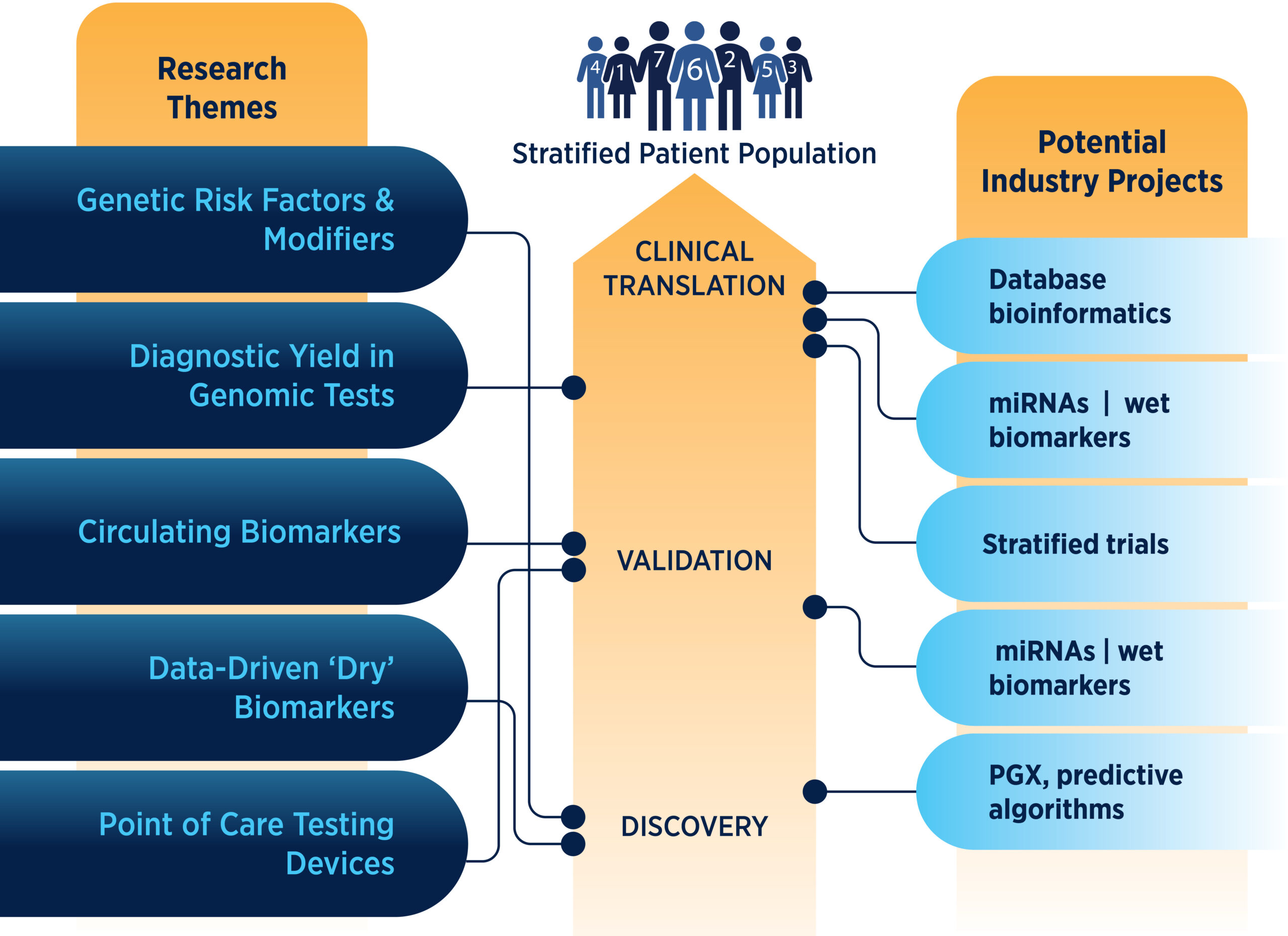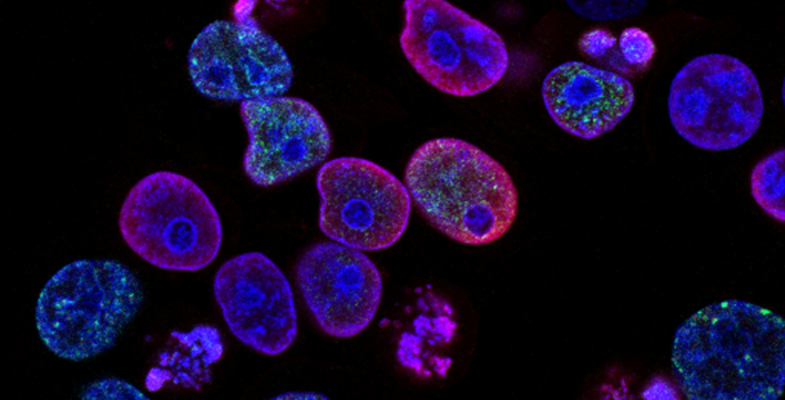The objective of the diagnostics programme is to create a stratified, research-engaged patient population to enable faster diagnosis, precision medicine and clinical trials. Our research focuses on how changes in our genes can cause, or contribute to the development of neurological disease. We use next-generation DNA sequencing technologies, including long-read approaches. We align our work closely with the healthcare system; developing processes to enable greater diagnostic yield from genetic testing in the clinic and progressing blood-based (‘wet’) and data-driven (‘dry’) biomarkers towards clinical use. We are developing ultrasensitive technology for monitoring of emerging biomarkers and drug levels in minimally invasive samples.
Our Grand Challenges are
- To describe novel genetic causes of, and risk factors for, neurological disease, via national and international collaborative research.
- To increase the clinical impact and utility of genomic testing in the neurology clinic, connecting with national and European initiatives.
- To identify and translate to the clinic, circulating and data-driven biomarkers for neurological diseases.
- To develop point-of-care testing technologies for these biomarkers.
- To facilitate clinical trials in Ireland.
Overview of the Diagnostics Research Programme

View Transcript
ShowOur Diagnostic Research Programme explores better ways to stratify patients for new treatments. We also work with industry partners on mutual research interests.
Our Diagnostics Programme is distinguished by
- National clinical networks with thousands of patients under the care of FutureNeuro-affiliated clinicians.
- Large, well-phenotyped biobanks for neurological diseases.
- Excellence in genomics, noncoding RNA profiling and annotation, deep phenotyping, cognitive profiling, neuroelectric signalling and brain structure analysis.
- Leading roles in international consortia, allowing questions to be tested in larger cohorts.
- Technology platforms for point-of-care tests and algorithms for pattern detection within big datasets.
Towards patient stratification
Here we aim to refine our understanding of genomic burden as a disease modifier, by quantifying the contribution of PRS on a per gene (SCN1A etc) and mutation type (LoF etc) basis.
Towards genomic diagnostics
We are exploring approaches to increase diagnostic yield, incorporating transcriptomics, novel variant classes, intergenic variation and long-read sequencing.
Circulating biomarker research
This research is focusing on how early we can predict an individual’s trajectory (e.g. treatment-resistance).
Towards patient stratification
Here we aim to refine our understanding of genomic burden as a disease modifier, by quantifying the contribution of PRS on a per gene (SCN1A etc) and mutation type (LoF etc) basis. We will test for genetic burden across non-coding regions as a contributor to disease and will develop a classifier tool for determining clinical prognosis, that integrates neurological disease risk as conferred by common and rare genetic variation.
Research Leads
Towards genomic diagnostics
We are exploring approaches to increase diagnostic yield, incorporating transcriptomics, novel variant classes, intergenic variation and long-read sequencing. We will use Infrastructure/systems to enable diagnostics across hospitals/healthcare networks, including EU-level registers such as EpiCARE.
Circulating biomarker research
This research is focusing on: How early can we predict an individual’s trajectory (e.g. treatment-resistance)? Which biofluids and which molecules/modifications carry the highest diagnostic yield? Can integration of clinical information by ML/AI approaches enhance this further? Which combination of plasma protein predict transition to psychotic disorder? How do our circulating biomarkers compare against other proposed biomarkers? Can we link the circulating biomarker to pathophysiologic events in the human brain?
Data-driven-biomarker testing
Here we aim to investigate the extent to which circadian rhythm can predict seizure frequency and treatment outcomes? What parameters of high-density surface EMG and canonical coherence analysis on EEG- EMG provides best discrimination and stable patient cluster identification in ALS? Can retinal phenotypes, quantified by optical coherence tomography and fundus fluorescein angiography, act as biomarkers for disease progression in genetic epilepsies?
Point-of-care testing
We will use radically new detection technologies, to enable easy to use, sample-to-answer devices that can be used as intuitively as a smartphone. We are developing multianalyte sensors to inform clinical decisions. And, we are optimising the sensor technology as a means to improve workflow within the hospital.
Research Leads
Key Diagnostic Publications
Collaborative Industry Projects
We partner with industry to address the key challenges in diagnosing neurological disease. Read more about Industry Partnerships. Examples of recent collaborations include:
Congenica
We are working together to develop new software to deliver faster and more accurate diagnoses in genetic epilepsies.
UNEEG Medical
We are working together to explore improved technologies to monitor epilepsy seizures.
Angelini
We are working together to explore the existence of genomic biomarkers to predict treatment response for specific AEDs and adverse effects.

Theraputics
Welcome to our Therapeutics research programme where our objective is to produce a new generation of disease-modifying treatments for brain diseases.
Digital Health
Welcome to our Digital Health Research Programme, where we are dedicated to transforming and democratising healthcare through a more holistic and comprehensive approach to individual health and wellbeing.














